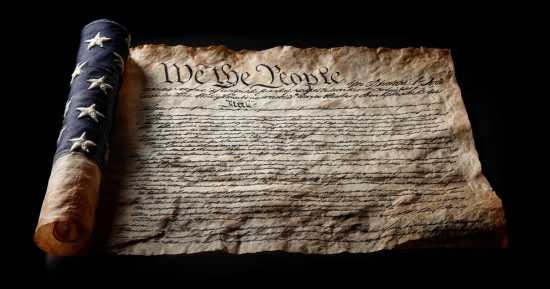
Whispers of debate in 1787 still echo when you take the 7 Principles of the Constitution Quiz, because these core ideas transformed a fragile union into a lasting republic. Founders clashed, argued, and compromised, yet their vision produced a framework strong enough to withstand centuries of change. Each principle was more than theory it was a safeguard for liberty and a blueprint for a government that could endure.
As delegates gathered in Philadelphia, tension filled the air. They wrestled with questions of power, rights, and balance, knowing that every decision would shape a nation’s future. Popular sovereignty, federalism, and separation of powers weren’t abstract concepts; they were answers born from urgent necessity. By weaving these principles together, the Constitution became a living document that both bound the states and freed the people to govern themselves.
Understanding these principles means uncovering the DNA of American democracy. They define how laws function, how leaders are checked, and how citizens remain central to the nation’s story. To study them is not to look backward but to see how every civic battle today connects to decisions made in that sweltering summer of 1787.
The Founding Logic Behind the 7 Principles
The 7 principles of the Constitution emerged from relentless debate and a desire to prevent tyranny. Popular sovereignty placed power in the hands of the people, rejecting any notion of distant, unchecked authority. Federalism balanced state and national power, creating a partnership rather than a hierarchy.
Separation of powers and checks and balances ensured that no single branch of government could dominate. Each branch gained defined authority, while interlocking mechanisms forced cooperation and compromise. These design choices still shape every law passed and every decision made within the republic.
Meanwhile, principles like limited government, individual rights, and republicanism formed the heart of the nation’s identity. They were not mere ideals—they became structural guarantees that gave citizens both protection and responsibility.
How the 7 Principles Shaped American History
Throughout history, these principles have faced tests that proved their resilience. During Reconstruction, federal power was challenged by state resistance, but the Constitution’s framework kept the union intact. In the 20th century, civil rights cases leaned on these very principles to expand freedoms once denied.
Supreme Court rulings from Brown v. Board of Education to Miranda v. Arizona reaffirmed that constitutional principles are not relics—they are tools that evolve with the nation. Each decision reinforced the promise of liberty and accountability embedded in the founding document.
Even now, these principles shape debates on voting rights, executive power, and the limits of government surveillance. They remain as relevant today as they were in 1787.
The Modern Relevance of the Constitution’s Principles
In today’s polarized climate, the 7 principles offer a map back to balance. They demand participation from every citizen and insist that power never rests in a single set of hands. Their endurance proves that a well-designed system can survive even in turbulent times.
Popular sovereignty drives every election, while checks and balances keep each branch accountable. These principles force leaders to serve the people rather than themselves, a safeguard that strengthens with each test it survives.
By studying and defending them, Americans keep the original vision alive. The principles of the Constitution are not just historical concepts—they are daily realities that shape every civic decision.
The 7 Fun Facts About the 7 Principles of the Constitution
- The phrase “We the People” was groundbreaking in 1787, directly challenging monarchies and aristocratic rule.
- Checks and balances inspired political cartoons as early as the 1800s, often mocking power struggles between branches.
- Federalism led to one of the quirkiest facts in US history: states once had their own currencies before the Constitution standardized it.
- Some founders feared separation of powers would slow government so much that nothing would get done—an argument still alive today.
- Popular sovereignty inspired some states to hold “mock congresses” to teach citizens how government functioned.
- Limited government ideas traced back to English common law and even the Magna Carta of 1215.
- The term “republicanism” in 1787 had nothing to do with political parties—it was purely about civic virtue and elected representation.
7 Serious Facts About the 7 Principles of the Constitution
- Popular sovereignty laid the foundation for the abolition of slavery through the 13th Amendment.
- The principle of federalism was central to the Civil War, with disputes over state versus national authority driving conflict.
- Judicial review, though not explicitly stated in the Constitution, became a practical extension of checks and balances after Marbury v. Madison in 1803.
- Separation of powers has repeatedly blocked attempts by presidents to overreach their authority.
- Individual rights continue to evolve, with Supreme Court cases expanding protections for free speech, privacy, and equality.
- The 7 principles remain the foundation for every constitutional debate in Congress and the courts today.
7 Principles Of The Constitution – FAQ
The 7 principles of the Constitution are popularly known as popular sovereignty, limited government, separation of powers, checks and balances, judicial review, federalism, and republicanism.
Popular sovereignty refers to the idea that the authority of the government is created and sustained by the consent of its people. In the Constitution, this principle is reflected in the Preamble, which begins with “We the People,” emphasizing the power of the citizens in establishing and maintaining the government.
Checks and balances ensure that no single branch of government becomes too powerful by allowing each branch to limit the powers of the others. This principle helps maintain a balance of power, preventing any branch from abusing its authority and promoting accountability within the government.
